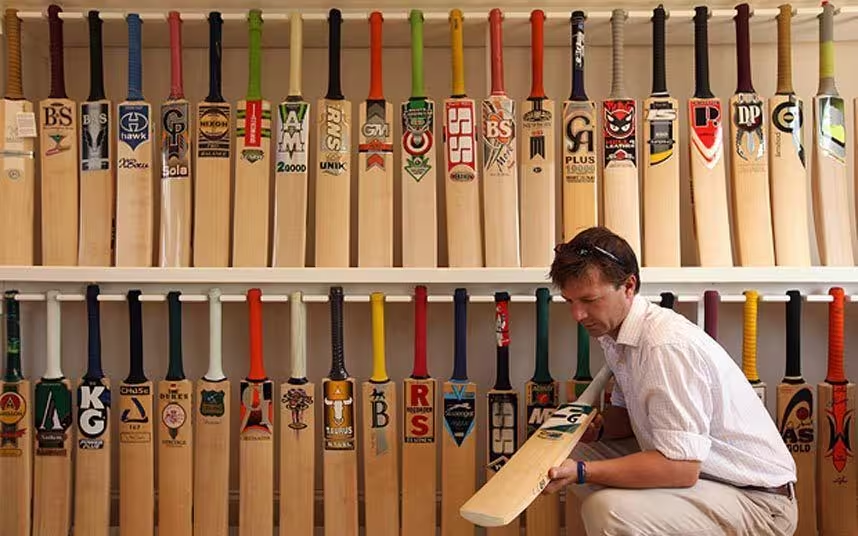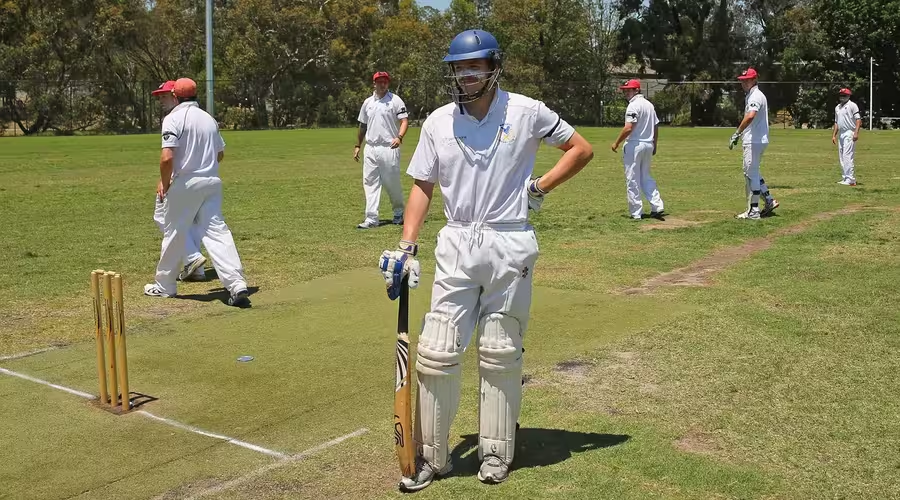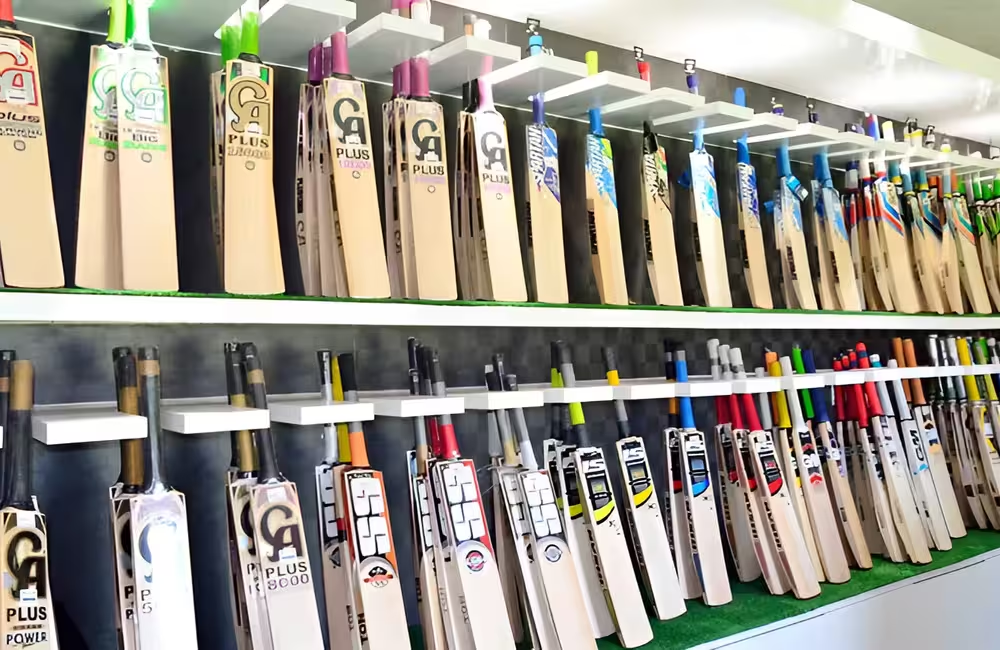When you think of cricket, what pops into your mind?
For many, it’s not just the thrill of the game but the gear that makes it all possible. Today, let’s dive into a crucial piece of cricket gear that’s often overlooked: the bat.
But not just any bat.
We’re talking about the bat, cricket, plus, power combination that can change your game. You might be wondering, “What makes a bat powerful?” Is it the design, the weight, or maybe the brand?
Let’s explore all that and more.
What Is a Bat in Cricket?
A cricket bat is more than just a stick; it’s your weapon on the field.
The bat is used to hit the ball and score runs, and the right one can mean the difference between winning and losing.
Types of Cricket Bats
- Kookaburra: Known for their durability and performance.
- Gray-Nicolls: Offers great balance and power.
- SS (Sareen Sports): Great for beginners and pros alike.
Why Power Matters
When you hear bat, cricket, plus, power, it’s all about how that bat performs.
The power in a bat comes from:
- Material: Typically made from willow, the best bats provide a combination of lightness and strength.
- Sweet Spot: This is the part of the bat that delivers maximum power. Hitting the ball here means your shot travels farther.
- Weight: A bat that’s too heavy can slow you down, while one that’s too light might not generate enough force.
My Journey to Find the Perfect Bat
Let me share a quick story. When I started playing cricket, I picked the first bat I saw.
Big mistake!
It felt heavy, and I struggled to hit the ball far. After a few matches, I realized the importance of choosing the right bat. Once I switched to a lighter bat with a bigger sweet spot, my game changed. I could hit boundaries consistently and enjoyed the game much more.
Choosing the Right Bat for You

So, how do you find the right bat?
Here are some tips that helped me out:
1. Determine Your Skill Level
- Beginners: Look for a lightweight bat that’s easy to handle.
- Intermediate/Advanced: A heavier bat can provide more power, but make sure it’s comfortable.
2. Consider Your Playing Style
Are you a:
- Defensive Player: Go for a bat with a larger face for better control.
- Aggressive Player: Choose a bat designed for power hitting.
3. Test Before You Buy
If you can, try out a few bats in the shop.
- Feel the Weight: Hold it up and swing it around.
- Check the Balance: The bat should feel natural in your hands.
The Technology Behind Bats
As cricket evolves, so does bat technology.
Features to Look For
- Shock Absorption: Some bats come with built-in technology to reduce vibrations.
- Profile: The shape of the bat can influence power and control.
Popular Brands Offering Innovative Designs
- Adidas: Known for stylish and functional bats.
- Puma: Offers lightweight bats with advanced features.
Price vs. Performance
You might think that spending more equals better performance, but that’s not always true.
- Affordable Options: Some mid-range bats perform just as well as high-end ones.
Bat Maintenance Tips
Taking care of your bat is key to maintaining its power.
1. Knocking In
Before you use your bat, it’s essential to knock it in.
- Purpose: This helps prepare the wood and increases its lifespan.
- How: Gently tap the surface with a mallet or hard ball.
2. Cleaning
Regularly clean your bat with a damp cloth to remove dirt and sweat.
- Avoid: Do not use harsh chemicals that can damage the wood.
3. Storage
Store your bat in a cool, dry place.
Avoid leaving it in direct sunlight or extreme temperatures.
Power Hitting Techniques
Understanding how to wield your bat effectively is as important as choosing the right one.
Batting Stance
Your stance sets the tone for your shot.
- Balanced: Feet shoulder-width apart, knees slightly bent.
- Ready Position: Stay alert, with your eyes on the bowler.
Footwork
Good footwork can help you get into the best position to hit the ball.
- Practice: Work on moving quickly to the ball and getting your body behind the shot.
Timing
The right timing can turn a good shot into a great one.
- Practice Drills: Use a bowling machine or have a friend throw balls at varying speeds.
The Power Behind Your Bat: Expanding on Technique and Strategy
Now that we’ve covered the essentials of choosing the right bat, cricket, plus, power, let’s dig deeper into how you can leverage your bat effectively on the field.
Having the right equipment is just part of the equation. Mastering your technique and understanding the strategy behind your play can significantly enhance your performance.
Advanced Batting Techniques
1. The Art of Shot Selection
Choosing the right shot is crucial to maximizing your scoring potential.
-
Front Foot vs. Back Foot Shots:
Front foot shots are ideal for full deliveries; think drives and pushes Back foot shots are perfect for short-pitched balls, allowing you to cut or pull.
-
Situational Awareness:
Always assess the bowler’s style and the match context. Are you chasing a target? Protecting your wicket? This can dictate your shot selection.
2. Batting Against Different Bowling Styles
Understanding how to face various bowling styles can give you a significant edge.
- Fast Bowlers:
Quick reflexes are essential. Stand your ground, focus on the ball, and be prepared to play a defensive shot if needed. - Spin Bowlers:
Use your feet to get closer to the pitch of the ball. This can help you play confidently with shots like the sweep or the drive. - Swing Bowlers:
Pay attention to the ball’s movement. Adjust your grip and angle to counteract the swing.
3. Building Your Mental Game
Cricket is as much a mental game as it is physical.
- Visualization: Picture your shots before facing the bowler. This mental rehearsal can improve your performance.
- Stay Focused: It’s easy to get distracted by the crowd or the scoreboard. Keep your focus on the ball and your technique.
Creating a Practice Routine
Consistent practice is key to mastering the art of batting. Here’s a simple routine that has worked for me and many others:
1. Warm-Up and Stretching
- Always start with a warm-up to prevent injuries. Focus on dynamic stretches that get your blood flowing.
2. Batting Drills
- Shadow Batting: Practice your shots without a ball to get your form right.
- Target Practice: Set up targets on the field and practice hitting them from different angles.
3. Match Simulation
- Gather a few friends and set up a mini-match. This will help you apply your skills in a real-game scenario, allowing you to experiment with different techniques and strategies.
Building Your Strength
To enhance your power when batting, consider integrating strength training into your routine.
Here are a few exercises that have helped me and could boost your batting power:
- Core Strength: A strong core improves your stability and shot power. Exercises like planks and Russian twists are great.
- Leg Workouts: Squats and lunges strengthen your legs, essential for generating power in your shots.
- Grip Strength: Using hand grippers or doing exercises like farmer’s walks can enhance your grip on the bat, allowing for better control.
Community and Support in Cricket

One aspect of cricket that’s incredibly rewarding is the sense of community.
Whether you’re playing at a local club or in school competitions, being part of a team can significantly enhance your experience.
Finding Your Cricket Club
- Local Clubs: Look for clubs in your area that welcome new members. It’s a great way to meet fellow players and improve your skills.
- Online Forums: Join cricket forums or social media groups. Sharing experiences and advice can be invaluable.
The Importance of Mentorship
Having a mentor can make a huge difference in your development as a player.
- Seek Out Experienced Players: Don’t hesitate to ask for advice from seasoned players in your club. They can offer insights that you may not find in books or online.
- Coaching: Consider taking lessons from a professional coach who can provide personalized feedback on your batting technique and strategy.
Exploring the Cricket Bat Market
As cricket enthusiasts, we know that the market is flooded with various options when it comes to choosing a cricket bat. With so many brands, materials, and prices available, it can be daunting to select the perfect one. Let’s break down the current cricket bat market to help you navigate your choices and make an informed decision.
Popular Cricket Bat Brands
Several brands have established themselves as leaders in the cricket bat industry, each offering unique features tailored to different player needs.
-
Kookaburra:
Known for their innovative designs, Kookaburra bats often feature a larger sweet spot, making them suitable for aggressive players looking to maximize power.
-
Gray-Nicolls:
This brand is famous for its balance between power and control. Many professional players endorse Gray-Nicolls for its quality and performance.
-
New Balance:
New Balance has made significant inroads in the cricket market, offering bats that combine modern technology with traditional craftsmanship.
-
SS (Sareen Sports):
SS bats are known for their affordability without compromising quality, making them a great choice for beginners and intermediate players.
Material Choices for Bats
When it comes to cricket bats, the material used can significantly impact performance. The two most common materials are:
-
Willow:
The preferred choice for professional bats. English willow is lighter and provides superior performance, while Kashmir willow is heavier and more affordable.
-
Composite Materials:
Increasingly popular, composite bats offer durability and are often used in training or casual games. However, they may not provide the same power and feel as traditional willow bats.
Price Range and Value
Cricket bats can range in price from around $50 for entry-level options to over $500 for high-end models used by professional players. Here’s a quick guide to understanding the price tiers:
- Entry-Level Bats ($50-$150):
Perfect for beginners or casual players. These bats are generally made from Kashmir willow and are durable. - Mid-Range Bats ($150-$300):
Typically made from lower-grade English willow, these bats provide a good balance of performance and price. - High-End Bats ($300 and above):
These bats are crafted from premium English willow, offering the best performance and sweet spot, making them ideal for serious players.
Custom Bats: A Personalized Approach
If you’re looking for something special, consider getting a custom bat. Many brands now offer the option to customize bats according to your preferences in weight, grip, and size.
This way, you can ensure your bat complements your playing style perfectly.
Understanding Bat Regulations
If you plan to compete in leagues, it’s essential to understand the regulations surrounding bat specifications.
-
Length and Width:
The bat should not exceed 38 inches in length and 4.25 inches in width.
-
Material Restrictions:
Ensure your bat is made of approved materials as per your league’s regulations.
The Evolution of Cricket Bats
Cricket bats have undergone significant changes over the years, both in terms of design and technology.
Let’s take a look at how the cricket bat has evolved:
Historical Overview
-
Traditional Designs:
Early cricket bats were flat and thin, resembling modern-day hockey sticks. As the game evolved, players needed more power, leading to thicker edges and broader faces.
-
Modern Technology:
Today’s bats incorporate advanced technology, such as enhanced shock absorption, reinforced edges, and even the integration of lighter materials to optimize performance.
Innovations That Changed the Game
-
Weight Distribution:
Advances in design allow for improved weight distribution, giving players the ability to swing harder without sacrificing control.
-
Sweet Spot Technology:
Manufacturers have focused on enhancing the sweet spot, allowing for more powerful shots even if the ball doesn’t hit the center of the bat.
Training Techniques to Enhance Bat Performance

Even with the best bat, cricket, plus, power, consistent training is vital to elevate your game. Here are some training techniques to consider:
1. Focused Batting Drills
Incorporate these drills into your routine to build your batting skills:
-
Net Practice:
Spend time in the nets facing bowlers or a bowling machine. This allows you to work on your timing and shot selection.
-
Showdowns:
Have a partner throw balls at varying speeds and angles to simulate match conditions. Focus on your footwork and shot execution.
2. Video Analysis
Record your batting sessions and analyze your technique.
- Identify Weaknesses: Look for areas where you can improve your stance, grip, or timing.
- Set Goals: Based on your analysis, set specific goals for your next training session.
3. Mental Rehearsal
- Visualisation: Spend a few minutes before practice visualising your shots and approach to the game. This mental practice can improve your confidence and focus.
Common Mistakes to Avoid
Even experienced players can fall into certain traps. Here are common mistakes to watch out for:
- Overgripping the Bat: Holding the bat too tightly can restrict your swing. Relax your grip to allow for a fluid motion.
- Neglecting Footwork: Many players focus solely on their bat swing but forget the importance of good footwork. Ensure you’re moving your feet correctly to position yourself for shots.
- Ignoring Equipment Care: Failing to maintain your bat can lead to poor performance. Regularly clean, knock in, and store your bat correctly to ensure longevity.
Engaging with the Cricket Community
As you continue your journey in cricket, remember the value of connecting with others in the sport.
Joining Local Leagues and Competitions
- Participating in local leagues not only hones your skills but also builds camaraderie among players.
Online Resources
- Leverage online resources like forums, social media groups, and YouTube channels dedicated to cricket. Engaging with these communities can provide valuable insights and tips.
FAQs About Bats Cricket Plus Power
What is the best material for a cricket bat?
Willow is the best choice due to its balance of weight and strength.
How long should a cricket bat last?
With proper care, a good bat can last several seasons.
What is the difference between junior and senior bats?
Junior bats are lighter and shorter, designed for younger players.
Can I use a cricket bat for other sports?
While not recommended, some people use bats for baseball or softball, but performance will vary.
How can I improve my batting power?
Focus on strength training, practice your technique, and choose the right bat.
Conclusion: The Power of the Bat
As we wrap up our discussion on the bat, cricket, plus, power, remember that cricket is a journey. Every player has their unique path, filled with challenges and triumphs.
Whether you’re a beginner or an experienced player, there’s always something new to learn and improve upon.
Recap of Key Points
- Choosing the Right Bat: Focus on weight, material, and sweet spot.
- Mastering Technique: Understand shot selection, bowling styles, and mental resilience.
- Building Strength and Community: Engage in strength training and seek support from fellow players and mentors.

